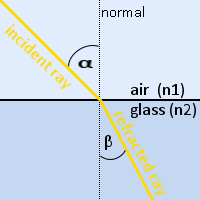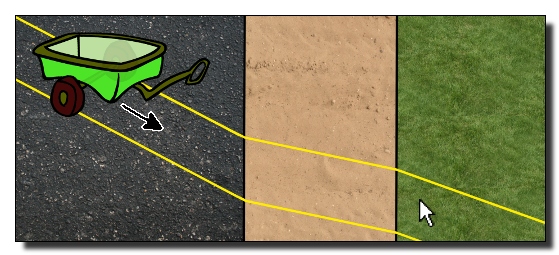Substance/Material |
Refractive index at 20°C. |
Air |
1 |
Water |
1,33 |
Glass |
approximately 1,5 |
Diamond |
2,47 |
Refraction - Model
A model can be used to predict the direction a ray of light after it has been deflected at a boundary of media.
Imagine you are pushing a wagon. You start on a paved road, cross a strip of sand and finally go on pushing the wagon on the lawn. But you cross the sand diagonally so the left wheel is the first to enter the sand.
Roll your mouse over the picture to see the wagon beeing deflected on the surfaces. |
|
The wagon is pushed more easily on paved ground than on sand. So when the first wheel enters the sand, it is markedly slower than the second one, so that the right side of the wagon moves a bit farther and thus is going to turn.
On the lawn the wagon moves a little bit more easily than on sand. So here the left wheel rolls a bit faster than the one on the right side and thus the wagon slightly turns to the right again.

This is similar to the behaviour of light at the boundaries of media. In case of this, media with a high refractive index correspond to undergrounds on which it is hard to move. The bigger the difference between the refractive indices is, the greater is the refrction. The direction of the kink depends on whether one moves from a „good“ to a „bad“ underground or the other way round.


